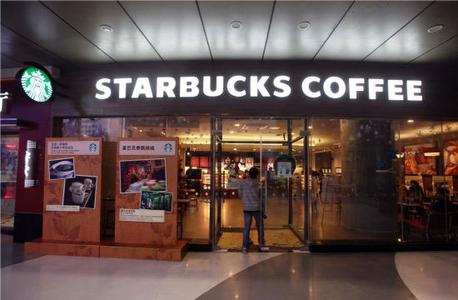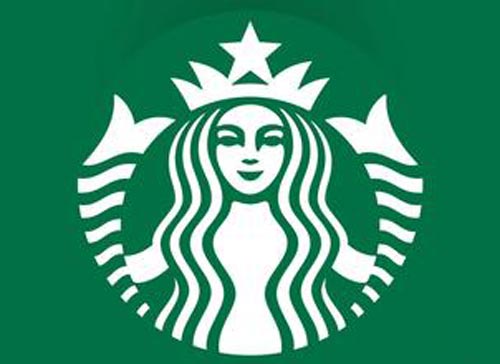A case study of Starbucks supply chain Management
Follow the caf é (Wechat official account vdailycom) and found that Beautiful Cafe opened a small shop of its own.
From coffee beans to a cup of mellow coffee, it takes a long supply chain mileage. Starbucks, the world's largest coffee chain, has experienced declining sales and rising operating costs during the recession, so its supply chain reform is worth learning.
Starbucks has more than 16700 retail stores in 51 countries around the world, with about 5 million customers shopping every week. During the global financial tsunami in 2008, Starbucks found that its revenue gradually declined, but its operating costs continued to rise. In the United States, for example, the operating cost of the supply chain has increased from about $75 million a year to $82.5 million a year, but revenue has fallen by 10% compared with the same period.

Part of this reason comes from within Starbucks, because in order to quickly show stores around the world, you have to find local logistics service providers, and since "exhibition stores" are the primary goal, it is difficult to take into account the issue of supply chain optimization.
Starbucks' supply chain reform comes from revenue pressure, so senior executives naturally strongly support the reform plan, while the task of reform falls on Peter D.Gibbons, which has been in the company for just over a year.
Any improvement starts with an understanding of the current situation, such as what problems will occur in each branch? Where are the logistics costs spent? Gibbons did the same thing. After a period of analysis, he found that all the stores had less than 50% on-time arrival rate.
In order to gain an in-depth understanding of the cause of the problem, Gibbons personally went to those particularly problematic branches to learn about the delivery of goods, and actually interviewed the branch staff to understand the daily delivery procedures. After cost analysis, Gibbons found that 60-70% of the original logistics costs were "logistics outsourcing" costs, which led to a rapid rise in logistics costs, especially the more suppliers outsourced, on the contrary, the unit price of distribution continued to rise, and Starbucks itself lost its logistics leadership, resulting in the situation of being kidnapped by outsourced suppliers.
To solve this problem, Gibbons has planned a three-stage supply chain reform plan and reported it to the board of directors. First, Starbucks must reorganize its "supply chain" division and make it more clear that it is in charge.
Gibbons makes full use of the four major activities of the supply chain put forward by the American supply chain Association, namely, plan, source, make and delivery. Therefore, as long as it is involved in "planning" activities, whether it is procurement planning, distribution planning, demand forecasting planning …... Are incorporated into a single planning department.
The integration of the purchasing department is more interesting. Gibbons divides the purchasing department into "coffee" and "non-coffee" units. Starbucks spends $2.5 billion a year on non-coffee purchases (such as furniture, cooking equipment, bread, etc.), compared with $600 million a year for coffee alone. After comparison, it is not difficult to find that the cost of buying coffee accounts for a high proportion of the total expenditure.
The rest of the departments involved in "production" affairs are assigned to the production department, while the manpower related to logistics, warehousing and distribution are all incorporated into the "distribution" department.
In the past, there may be no specific relationship between the baking factory and the distribution storefront, but now it has been changed to a baking factory which is only responsible for the storefront around it at a certain distance. After shortening the distribution distance, the reliability of distribution will naturally increase. In the United States, Starbucks has four coffee processing plants of its own, located in Washington, Nevada and Pennsylvania, and joined the fourth in California in 2009. After the fourth factory came into operation, the working hours of all factories changed from seven days a week to five days a week.
It is important for Starbucks to establish a global, single supply chain. Starbucks coffee beans come from Latin America, Africa and Asia, and the main coffee consumers are Europe and the United States. these large quantities of coffee beans are transported by sea containers.
In order to evaluate suppliers, Starbucks has implemented a complete evaluation system for suppliers, which has many scales, but the evaluation method is very simple. For example, if the supplier should deliver 10 stacks, but missed one pallet, it will be rated as "0". On the other hand, if the supplier shows up on time when the goods are expected to arrive on time, it will be rated as "1". Every employee can understand this simplified system and know how to return it, and the design of the information system has become simple. therefore, the performance of each supplier can be accurately evaluated, and the results of the evaluation can be used as a reference for subsequent negotiations. If the supplier wants to raise the price, Starbucks also has sufficient data to prove whether the supplier should raise the price.
The second is to solve the problem of unpunctual delivery to stores, and at the same time to reduce logistics costs. The specific approach is to reduce the number of outsourced suppliers through contract negotiations with suppliers, so that suppliers who continue to cooperate can have a larger distribution volume. As a result, a better information system can be introduced to connect the information exchanges between Starbucks and distribution suppliers.
Starbucks has done the right thing in these basic projects of supply chain reform, so employees also see hope for the future and have greater confidence to meet the future supply chain challenges.
Starbucks enjoys a high reputation in the world, so it naturally has to bear more "social responsibility". Starbucks also focuses on "sustainable development", that is, its supply chain management has been advanced to the "boundaries" of the supply chain, including the upstream boundaries of the supply chain, such as the welfare of coffee farmers, land use, water management and so on. In terms of the downstream border, Starbucks executives announced that from 2015, all take-out cups will meet the goal of "recycling" and "recycling", so this brings Starbucks another problem of "reverse logistics".
Let the supply chain management reach the boundary management, is the highest state of the whole supply chain management, because the management can see the source problem and the end problem, and solve the problem directly from the root, for example, improve the welfare of coffee farmers, assist coffee farmers to keep farm records, trace production resumes, and help consumers solve the problem of abandoned coffee cups. This approach helps to generate more innovative supply chains and new ways to reduce costs.
Important Notice :
前街咖啡 FrontStreet Coffee has moved to new addredd:
FrontStreet Coffee Address: 315,Donghua East Road,GuangZhou
Tel:020 38364473
- Prev

How about McDonald's coffee?
Following Kaiping (Wechat official account vdailycom) found that if a McDonald's 6 yuan cup of coffee opened a small restaurant of its own, it was really terrible, as American as soapy water. Every time I add milk and sugar, if it's Mc cafe, it's actually pretty good. The first is an automatic American machine, which makes more coffee than siphon or drip filtration.
- Next

The reasons for Starbucks' success
Following Cafe (official Wechat account vdailycom) found that Starbucks, founded in 1971, is the largest coffee chain in the world, with nearly 21300 branches around the world, and more than 2000 stores in China alone, with a success rate of almost 100%. What is the secret of this location system? Let's hear how Starbucks China executives
Related
- Why are the coffee in some coffee shops not enough after being frozen? What should I make up for my American latte cappuccino coffee after being frozen?
- How much water does it take to steam coffee by hand? Why is the coffee brewing and steaming time 30 seconds? What is the purpose of steaming coffee?
- The suspected drink contains too much caffeine! Overlord Tea Lady responds urgently!
- Starbucks rejects antique paper coupons?! Netizen: Missed marketing opportunities!
- What ratio of water temperature and ground does the smart cup method use to press coffee? The difference between brewed coffee and filtered coffee?
- What is the standard process for the purpose of coffee cup testing? What is the difference between hand-brewed coffee and cup testing?
- How to use hand-brewed coffee paragon small golden balls? How does cold coffee lock in the aroma of coffee?
- Is American coffee black? What is the difference between American coffee and drip coffee?
- Unexpected! Well-known tea beverage brand Lele Tea will withdraw from the Zhengzhou market!
- Starbucks enters the fashion and beauty industry?! Netizen: Give me an ice American eye cream

